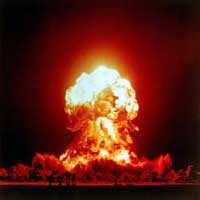Trading Range Trading ranges can play an im
Post# of 18540

Trading Range
Trading ranges can play an important role in determining support and resistance as turning points or as continuation patterns. A trading range is a period of time when prices move within a relatively tight range. This signals that the forces of supply and demand are evenly balanced. When the price breaks out of the trading range, above or below, it signals that a winner has emerged. A break above is a victory for the bulls (demand) and a break below is a victory for the bears (supply).
After an extended advance from 27 to 64, WorldCom (WCOM) entered into a trading range between 55 and 63 for about 5 months. There was a false breakout in mid-June when the stock briefly poked its head above 62 (red oval). This did not last long and a gap down a few days later nullified the breakout (black arrow). The stock then proceeded to break support at 55 in Aug-99 and trade as low as 50. Here is another example of support turned resistance as the stock bounced off 55 two more times before heading lower. While this does not always happen, a return to the new resistance level offers a second chance for longs to get out and shorts to enter the fray.
In Nov/Dec-99, Lucent Technologies (LU) formed a trading range that resembled a head and shoulders pattern (red oval). When the stock broke support at 60, there was little or no time to exit. Even though there is a long black candlestick indicating an open at 59, the stock fell so fast that it was impossible to exit above 44. In hindsight, the support line could have been drawn as an upward sloping neckline (blue line), and the support break would have come at 61. This is only 1 point higher and a trader would have had to take action immediately to avoid a sharp fall. However, the lows match up rather nicely on the neckline, and it is something to consider when drawing support lines.
After Lucent declined, a trading range was established between 40.5 and 47.5 for almost two months (green oval). The resistance level of the trading range was well marked by three reaction peaks at 47.5. The support level was not as clearly marked, but appeared to be between 40 and 41. Some buying interest began to become evident around 44 in mid- to late-February. Notice the array of candlesticks with long lower shadows, or hammers, as they are known. The stock then proceeded to form two up gaps on 24-Feb and 25-Feb, and finally closed above resistance at 48. This was a clear indication of demand winning out over supply. There were still two more opportunities (days) to get in on the action. On the third day after the breakout, the stock gapped up and moved above 56.
 (0)
(0) (0)
(0)